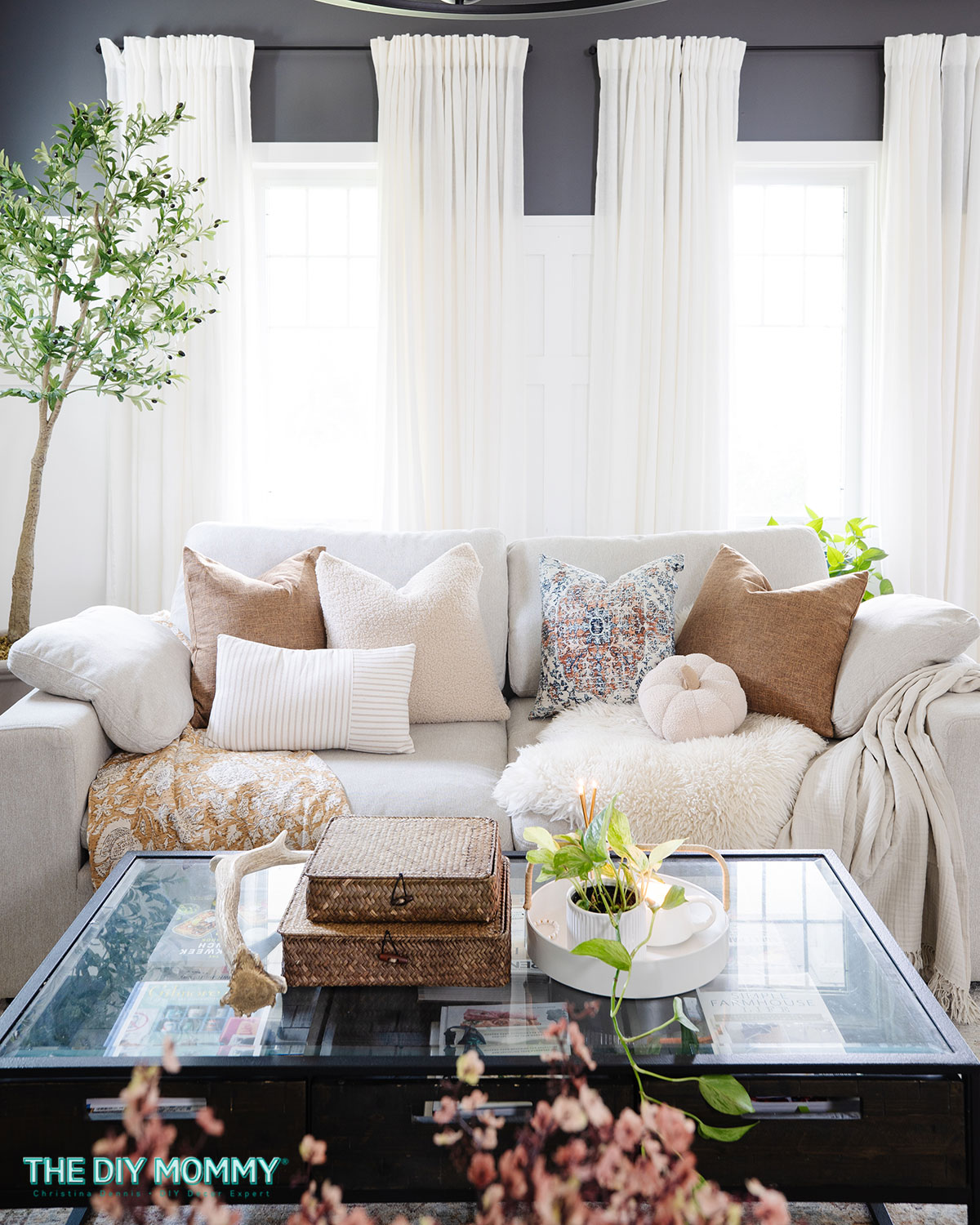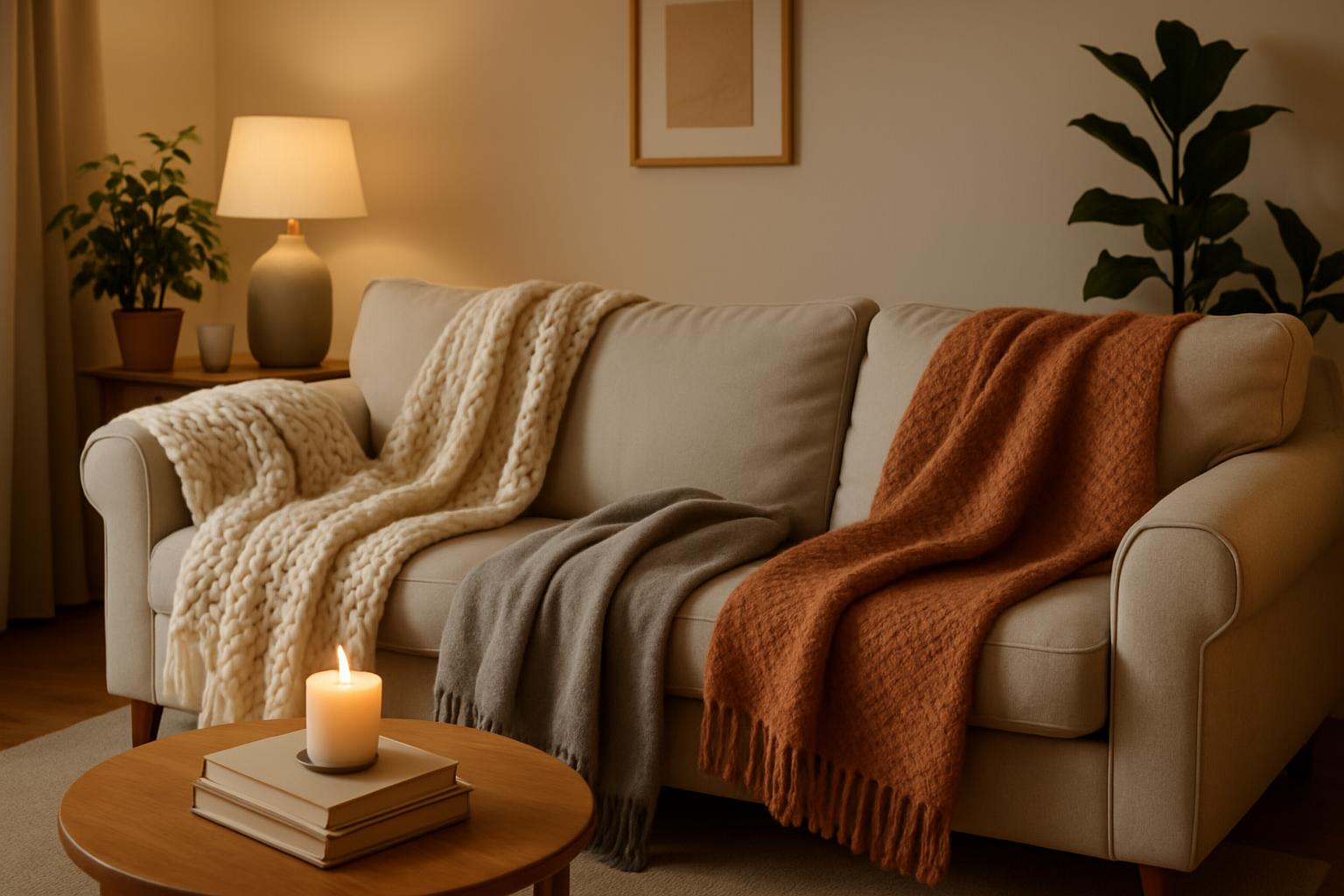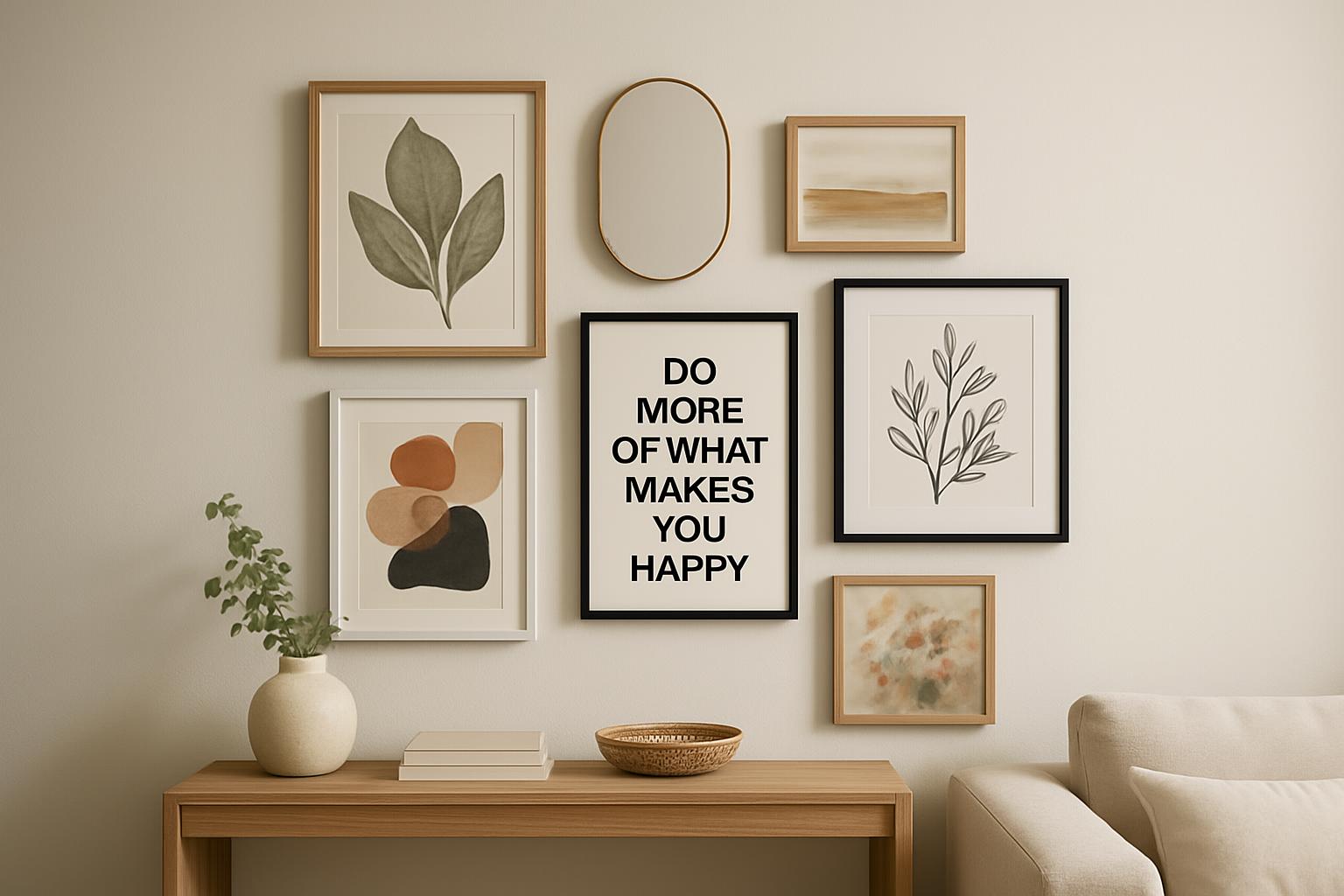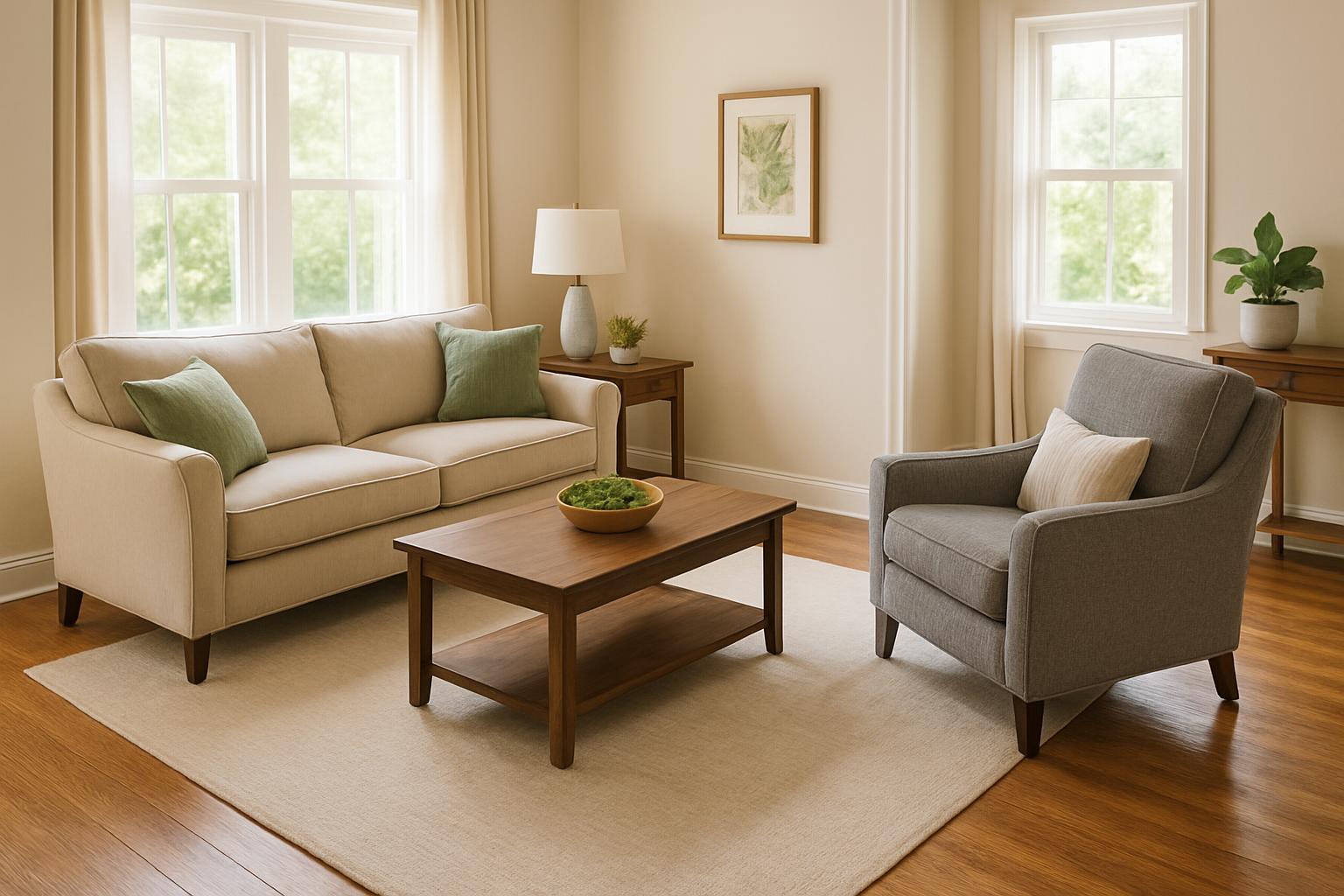Your living room is the heart of your home—the place where you unwind after a long day, entertain guests, and create lasting memories with family. But what happens when your once-beloved space starts to feel stale, outdated, or simply uninspiring? The good news is that you don’t need to break the bank or embark on a major renovation to breathe new life into your living room. With just a few strategic, budget-friendly decor swaps, you can completely transform the look and feel of your space.
In today’s world, where home improvement shows make dramatic makeovers look effortless and social media feeds are filled with picture-perfect interiors, it’s easy to feel overwhelmed by the prospect of redecorating. Many homeowners assume that creating a beautiful, stylish living room requires a substantial financial investment. However, the truth is that some of the most impactful changes come from simple, affordable updates that focus on the details that matter most.
The concept of budget-friendly decorating isn’t about cutting corners or settling for less—it’s about being smart, creative, and strategic with your choices. It’s about understanding which elements have the greatest visual impact and focusing your efforts (and budget) on those key areas. When you know how to make small changes that deliver big results, you can achieve a designer look without the designer price tag.
The Power of Small Changes
Before we dive into specific decor swaps, it’s important to understand why small changes can have such a dramatic impact on your living room’s overall appearance. Interior design is fundamentally about creating harmony, balance, and visual interest within a space. When one or two elements feel outdated or out of place, they can throw off the entire room’s aesthetic. Conversely, updating just a few key pieces can create a ripple effect that makes everything else look fresh and intentional.
Think of your living room as a carefully orchestrated symphony. Each element—from the largest piece of furniture to the smallest decorative accent—plays a role in creating the overall composition. When you swap out a few key “instruments” for ones that better complement the ensemble, the entire “performance” improves dramatically.
This approach to decorating is not only budget-friendly but also sustainable. Rather than discarding everything and starting from scratch, you’re working with what you have and making thoughtful additions and changes. This method allows you to preserve pieces you love while updating others that no longer serve your vision for the space.
Swap #1: Refresh Your Throw Pillows

Perhaps no other decor element offers as much bang for your buck as throw pillows. These small but mighty accessories have the power to completely change the color scheme, style, and mood of your living room in an instant. The beauty of throw pillows lies in their versatility—they’re relatively inexpensive, easy to swap out seasonally, and available in countless colors, patterns, and textures.
When selecting new throw pillows, consider them as an opportunity to introduce new colors or patterns that you’ve been wanting to try but weren’t ready to commit to in larger doses. A bold geometric pattern, a rich jewel tone, or an interesting texture can serve as the perfect accent to an otherwise neutral room. The key is to choose pillows that complement your existing furniture while adding visual interest and personality.
For maximum impact, aim for an odd number of pillows—typically three or five—and vary the sizes and shapes. Mix a large square pillow with a smaller lumbar pillow, or combine different textures like velvet, linen, and faux fur. Don’t be afraid to mix patterns, but keep them within the same color family or choose patterns that share a common element, such as similar scale or complementary colors.
Consider the season when selecting your throw pillows. Lighter, brighter colors and natural textures like linen or cotton work beautifully for spring and summer, while richer colors and cozier textures like wool or velvet are perfect for fall and winter. This seasonal approach allows you to refresh your living room multiple times throughout the year without making permanent changes.
Budget tip: Look for throw pillow covers rather than complete pillows. Covers are typically less expensive than pillows with inserts, and you can reuse inserts from old pillows. This approach also makes storage easier when you want to rotate seasonal pillows.
Swap #2: Layer in Cozy Throw Blankets

Throw blankets are another incredibly versatile and budget-friendly way to transform your living room’s aesthetic. Like throw pillows, blankets offer an opportunity to introduce new colors, textures, and patterns while also adding functional comfort to your space. The way you style and layer throw blankets can dramatically impact the overall feel of your room, making it appear more polished, cozy, or sophisticated.
The key to styling throw blankets effectively is to make them look intentional rather than simply tossed aside. Drape a chunky knit throw over the arm of your sofa, fold a lightweight blanket neatly at the foot of a chair, or layer multiple throws in complementary colors and textures for a rich, luxurious look. The goal is to create visual interest while maintaining a sense of effortless elegance.
When selecting throw blankets, consider both form and function. Choose materials that feel good against your skin and are appropriate for your climate and lifestyle. Natural fibers like cotton, wool, and linen offer excellent durability and comfort, while synthetic materials can provide easy care and affordability. Consider the weight of the blanket as well—lighter throws work well for layering and year-round use, while heavier blankets are perfect for cold weather and creating a cozy atmosphere.
Color and pattern selection for throw blankets should complement your overall design scheme while adding depth and interest. Neutral colors like cream, gray, and beige are versatile and timeless, while bold colors can serve as accent pieces that tie into other elements in the room. Textured blankets, such as those with cable knit patterns, waffle weaves, or fringe details, add visual and tactile interest even in neutral colors.
Don’t underestimate the power of layering multiple throws. Combining different textures and complementary colors creates a rich, collected-over-time look that feels both intentional and effortless. For example, layer a smooth cotton throw with a chunky wool blanket, or combine a solid-colored throw with one featuring a subtle pattern.
Swap #3: Add Small-Scale Wall Art

Wall art is one of the most effective ways to inject personality and style into your living room, and you don’t need to invest in large, expensive pieces to make a significant impact. Small-scale wall art, when thoughtfully selected and arranged, can create focal points, add color and pattern, and reflect your personal taste and interests.
The beauty of small wall art lies in its accessibility and flexibility. Prints, photographs, and small paintings are available at every price point, from affordable online retailers to local art fairs and thrift stores. This accessibility means you can experiment with different styles, colors, and themes without making a major financial commitment.
When creating a gallery wall or arranging multiple small pieces, consider the overall composition and how the pieces relate to each other. Look for common elements such as color, theme, or style that tie the pieces together while still allowing each piece to shine individually. A cohesive color palette can unify diverse pieces, while a common theme—such as botanical prints or abstract art—can create visual harmony.
The frames you choose are just as important as the art itself. Consistent framing can make a collection of disparate pieces look intentional and polished, while varied frames can add visual interest and personality. For a budget-friendly approach, consider purchasing inexpensive frames and spray painting them in a consistent color, or look for frames at thrift stores and garage sales that you can update with paint or new matting.
Placement is crucial when it comes to small wall art. Hang pieces at eye level, typically 57-60 inches from the floor to the center of the artwork. When creating a gallery wall, lay out the arrangement on the floor first to experiment with different configurations before committing to nail holes in the wall.
Consider the lighting in your room when selecting and placing wall art. Pieces with lighter colors or reflective elements can help brighten a dark corner, while darker pieces can add depth and sophistication to a well-lit area. If your room lacks natural light, choose art with lighter, brighter colors to help create the illusion of more light and space.
Swap #4: Rearrange Your Existing Furniture

One of the most overlooked and completely free ways to transform your living room is to simply rearrange your existing furniture. The layout of your furniture affects not only the functionality of your space but also its visual appeal and the way it feels to spend time there. A thoughtful rearrangement can make your room feel larger, more intimate, more functional, or more stylish—all without spending a single dollar.
Before you start moving furniture, take some time to assess your current layout and identify what’s working and what isn’t. Consider how you actually use the space: Do you primarily watch television, entertain guests, read, or use the room for multiple purposes? Understanding your lifestyle and needs will help you create a layout that’s both beautiful and functional.
One of the most common mistakes in living room layout is pushing all furniture against the walls. While this might seem like it creates more space, it often results in a room that feels disconnected and lacks intimacy. Instead, try pulling your sofa away from the wall and angling chairs to create a more conversational arrangement. This approach creates a more intimate seating area and can actually make your room feel larger by defining the space more clearly.
Consider creating multiple seating areas if your room is large enough. A primary seating area focused around the television or fireplace can be complemented by a secondary area with two chairs and a small table for reading or conversation. This approach makes the room more versatile and can accommodate different activities simultaneously.
Don’t forget about traffic flow when rearranging furniture. Ensure there are clear pathways through the room and that people can move comfortably between seating areas and to other rooms. A good rule of thumb is to leave at least 18 inches of walking space around furniture and 14-18 inches between a coffee table and seating.
Experiment with different arrangements before settling on one. Live with a new layout for a few days to see how it feels in practice. You might discover that a configuration that looks good on paper doesn’t work well for your daily routines, or you might find that an arrangement you weren’t sure about grows on you over time.
Swap #5: Introduce Greenery and Natural Elements
The final budget-friendly swap that can dramatically transform your living room is the introduction of plants and natural elements. Greenery brings life, color, and a sense of freshness to any space, while natural materials add warmth and texture that can soften hard edges and create a more inviting atmosphere.
Plants are particularly effective in living rooms because they serve multiple purposes: they improve air quality, add natural color and texture, and create visual interest at various heights throughout the room. The key is to choose plants that will thrive in your specific lighting conditions and that match your ability and willingness to care for them.
For low-light living rooms, consider plants like pothos, snake plants, or ZZ plants, which are both beautiful and tolerant of less-than-ideal conditions. If your living room receives bright, indirect light, you have more options, including fiddle leaf figs, rubber trees, or various types of palms. For those who prefer low-maintenance options, succulents and cacti can add interesting shapes and textures while requiring minimal care.
The containers you choose for your plants are just as important as the plants themselves. Decorative pots and planters can serve as design elements in their own right, adding color, texture, and style to your room. Consider the overall aesthetic of your space when selecting containers—sleek, modern pots work well in contemporary rooms, while woven baskets or ceramic pots might be better suited to more traditional or bohemian spaces.
Beyond live plants, consider incorporating other natural elements such as wooden bowls, woven baskets, stone or ceramic accessories, or dried flowers and branches. These elements add texture and visual interest while reinforcing a connection to nature that many people find calming and appealing.
When placing plants and natural elements throughout your living room, think about creating visual balance and varying heights. A large floor plant in one corner can be balanced by smaller plants on side tables or shelves. Hanging plants can add greenery at eye level and draw the eye upward, making the room feel taller and more spacious.
Bringing It All Together
The magic of these five budget-friendly decor swaps lies not just in their individual impact, but in how they work together to create a cohesive, refreshed living room. When you update your throw pillows and blankets, add thoughtful wall art, rearrange your furniture for better flow, and introduce natural elements, you’re creating layers of visual interest and comfort that transform the entire feel of your space.
The key to success with any decorating project is to approach it thoughtfully and intentionally. Rather than making random purchases or changes, consider how each element contributes to your overall vision for the space. Think about the mood you want to create, the colors that make you feel happy and relaxed, and the level of formality or casualness that suits your lifestyle.
Remember that decorating is a process, not a destination. Your living room should evolve with your tastes, needs, and life circumstances. The beauty of these budget-friendly approaches is that they allow you to make changes gradually and experiment with different looks without making major financial commitments.
As you implement these swaps, pay attention to what works and what doesn’t. Notice which changes have the biggest impact on how you feel in the space and which elements bring you the most joy. This awareness will help you make better decorating decisions in the future and develop your own personal style.
Most importantly, remember that the best living room is one that reflects your personality and serves your needs. While it’s helpful to draw inspiration from magazines, social media, and design shows, the ultimate goal is to create a space where you and your family feel comfortable, happy, and at home.
Frequently Asked Questions
How much should I budget for these decor swaps?
The beauty of these swaps is their affordability. You can implement all five changes for under 200−300,dependingonyourchoices.Throwpillowscanrangefrom200-300, depending on your choices. Throw pillows can range from 200−300,dependingonyourchoices.Throwpillowscanrangefrom15-50 each, throw blankets from 25−75,smallwallartfrom25-75, small wall art from 25−75,smallwallartfrom10-40 per piece, furniture rearrangement costs nothing, and plants typically cost $10-50 each depending on size and type.
How often should I update my throw pillows and blankets?
Many people enjoy updating these accessories seasonally—every 3-4 months. However, you can also update them annually or whenever you feel your space needs a refresh. The key is to choose pieces you love and that work well with your existing decor.
What if I’m renting and can’t put holes in the walls for art?
There are many renter-friendly options for displaying wall art, including removable adhesive strips, picture ledges that lean against the wall, easels for larger pieces, and gallery walls created on large pieces of plywood that can be leaned against the wall.
How do I choose the right plants for my living room?
Consider three main factors: lighting conditions, your experience level with plant care, and your aesthetic preferences. Start with low-maintenance plants like pothos, snake plants, or rubber trees if you’re new to plant parenthood. Visit a local nursery for personalized advice based on your specific space.
Can these swaps work in small living rooms?
Absolutely! In fact, these swaps can be even more impactful in smaller spaces. Focus on lighter colors to make the space feel larger, use mirrors as part of your wall art to reflect light, and choose plants that grow vertically rather than spreading wide.
How do I know if my furniture arrangement is working?
A good furniture arrangement should facilitate easy conversation, provide clear traffic flow, and feel balanced visually. If you find yourself constantly bumping into furniture or if the room feels awkward for conversation, it’s time to try a new arrangement.
What’s the biggest mistake people make with budget decorating?
The biggest mistake is buying items impulsively without considering how they fit into the overall design scheme. Take time to plan your changes and consider how new elements will work with existing pieces. It’s better to make fewer, more thoughtful purchases than many random ones.
How can I make my changes look more expensive than they were?
Focus on quality over quantity, pay attention to details like proper sizing and placement, and ensure everything is clean and well-maintained. Consistent color schemes and thoughtful styling can make budget pieces look much more expensive than they actually were.




